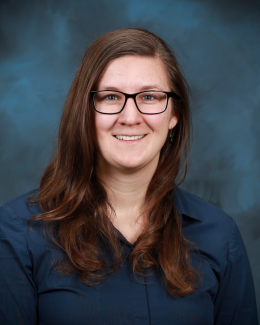
Bio
Juliane Weber is a R&D staff member in the Geochemistry and Interfacial Sciences Group at Oak Ridge National Laboratory. Since completing her Ph.D. in geochemistry in 2017 (RWTH Aachen University, Germany), she was a postdoctoral researcher in the Geochemistry and Interfacial Sciences Group at ORNL from 2017-2019, and an associate staff scientist at the Kuiper Materials Imaging and Characterization Facility of the Lunar and Planetary Laboratory at the University of Arizona from 2019-2020. She was an associate R&D staff member from 2020-2024.
Her expertise includes experimental geochemistry including liquid and solid characterization and their application to dynamic mesoscale processes in solutions and at fluid-solid surfaces. Her expertise in characterization methods include neutron/X-ray scattering , atom probe tomography, transmission electron microscopy, Raman spectroscopy and atomic force microscopy. Her research is focused on the influence of microstructure and porosity on reaction kinetics and transport at fluid-solid interfaces, in natural and engineered geomaterials, with the goal of upscaling molecular-scale reaction mechanisms to predict macroscopic transport of contaminants.
Juliane Weber is PI of the DOE BES-MSE funded project "Fundamental mechanisms driving efficiency of CO2 capture using mineral looping" since 2022. Information about the project can be found here: https://www.ornl.gov/project/fundamental-mechanisms-driving-efficiency-co2-capture-using-mineral-looping She is also part of the DOE BES CSBG Core project (led by Andrew G. Stack, ORNL), UNCAGE-ME III EFRC (led by Ryan Lively, Georgia Tech) and a DOE NEUP project (led by Sarah Finkeldei, UC Irvine).
Specialized Equipment
Neutron Scattering
Atom Probe Tomography
Focused Ion Beam Preparation
Transmission Electron Microscopy
Raman spectroscopy
Atomic Force Microscopy
Publications
Other Publications
I. Povstugar, J. Weber, et al. 2019. Correlative Atom Probe Tomography and Transmission Electron Microscopy Analysis of Grain Boundaries in Thermally Grown Alumina Scale. Microscopy and Microanalyses, 1-10.
[DOI: /10.1017/S143192761801557X]
F. Brandt, M. Klinkenberg, J. Poonoosamy, J. Weber, D. Bosbach, 2018. The Effect of Ionic Strength and Sraq upon the Uptake of Ra during the Recrystallization of Barite. Minerals, 8(11), 502.
[DOI: 10.3390/min8110502]
M. Klinkenberg, J. Weber, et al., 2018. The Solid Solution – Aqueous Solution System (Ba,Sr,Ra)SO4 + H2O: A Combined Experimental and Theoretical Study of phase equilibria at Sr-rich compositions. Chemical Geology, 497, 1-17.
[DOI: 10.1016/j.chemgeo.2018.08.009]
V. L. Vinograd, D. A. Kulik, F. Brandt, M. Klinkenberg, J. Weber, B. Winkler, D. Bosbach, 2018. Thermodynamics of the Solid Solution-Aqueous Solution System (Ba,Sr,Ra)SO4+ H2O: I. The Effect of Strontium Content on Radium Uptake by Barite. Applied Geochemistry, 89, 59-74.
[DOI: 10.1016/j.apgeochem.2017.11.009]
V. L. Vinograd, D. A. Kulik, F. Brandt, M. Klinkenberg, J. Weber, B. Winkler, D. Bosbach, 2018. Thermodynamics of the Solid Solution – Aqueous Solution System (Ba,Sr,Ra)SO4 + H2O: II Radium Retention in Barite-type Minerals at Elevated Temperatures. Applied Geochemistry, 93, 190-208.
[DOI: 10.1016/j.apgeochem.2017.10.019]
J. Weber, et al., 2017. Retention of 226Ra by Barite: The Role of internal Porosity. Chemical Geology, 466, 722-732.
[DOI: 10.1016/j.chemgeo.2017.07.021]
J. Weber, et al., 2016. Nano-structural Features of Barite Crystals observed by Electron Microscopy and Atom Probe Tomography. Chemical Geology, 424, 51-59.
[DOI: 10.1016/j.chemgeo.2016.01.018]

